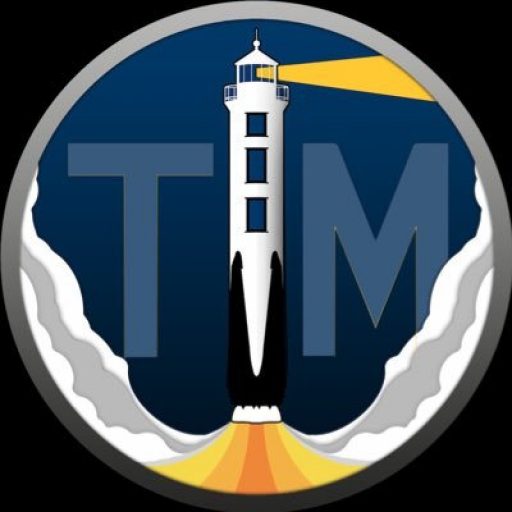Today, we got to set up remote cameras at LC-39A in advance of SpaceX’s CRS-10 launch to the Int’l Space Station. If you’ve ever wondered how it works, here’s how it goes down!
Between 12 and 24 hours before launch, media personnel are usually scheduled to have about an hours time at the launch pad to establish sound activated cameras.
You set your cameras to, after 30 seconds or 1 minute after not touching it, go to sleep not to drain the battery. Sound triggers wake the camera up and begin shooting at liftoff.
Sound triggers are fairly inexpensive and only fire when there’s sound (rocket engine ignition/liftoff). As the cameras stay asleep until liftoff and the CR2032 coin cell batteries last for weeks at a time before needing to be replaced, they usually don’t need resetting if there are launch delays – you can just leave them alone.
We arrived at 39A just after 1pm, and quickly began working on setting up our cameras.
Time is very limited at the pad and usually you are allotted around 1 hour to complete setup. This sounds like a lot of time, but time really flies when you are there.
I learned my lesson during the CRS-9 launch. I had 3 cameras to setup and had everything packed in one bag to take out to the pad. I planned to unpack and set everything up there.
This time for CRS-10, I arrived with all the tripods/cameras/lenses/triggers/cables attached to one another. All I needed to do was place them, stake the legs down, frame up the photo, and test.
Before where it took almost 20-25 minutes at each camera, I was done and moving on to the next one after only 6-8 minutes – much more efficient. I was also setting up 4 cameras this time and needed to be prepared.
Rain was also in the forecast (and usually always is here in Florida, in some regard) so I use 50 gallon trash bags to protect them from the elements.
These are the first two cameras I set, at the 5 o’clock photo mount on the pad:
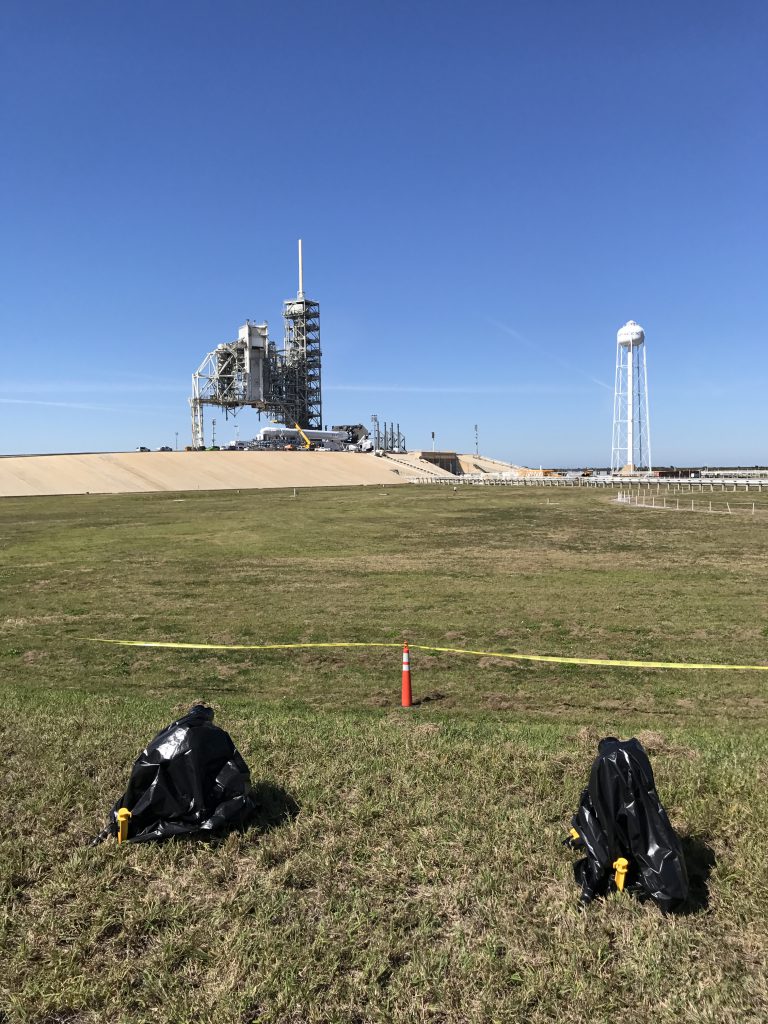
For a better visual of where that is with a top view:
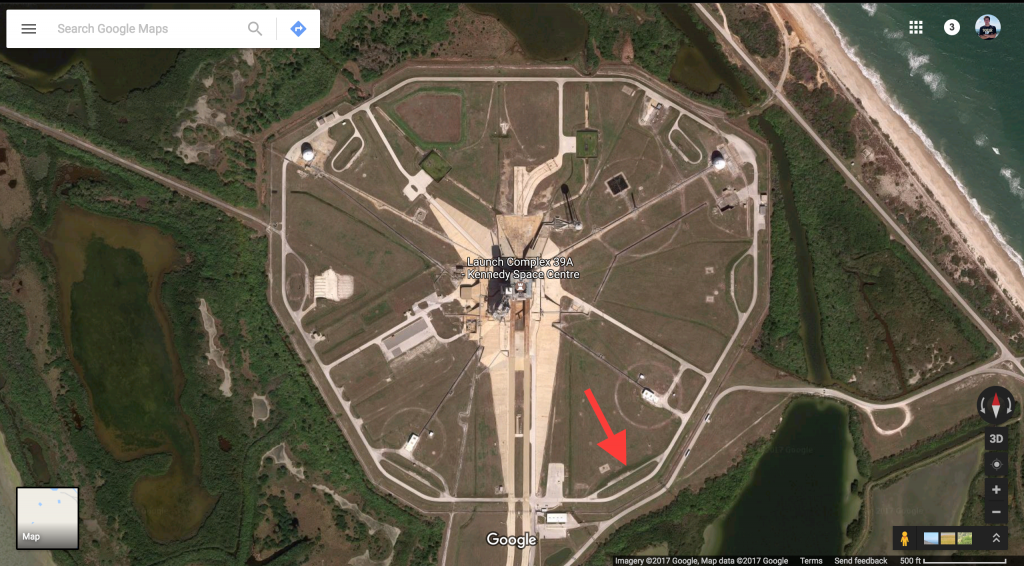
After setting both those up, we headed for the 3 o’clock photo mound, directly east of the rocket.
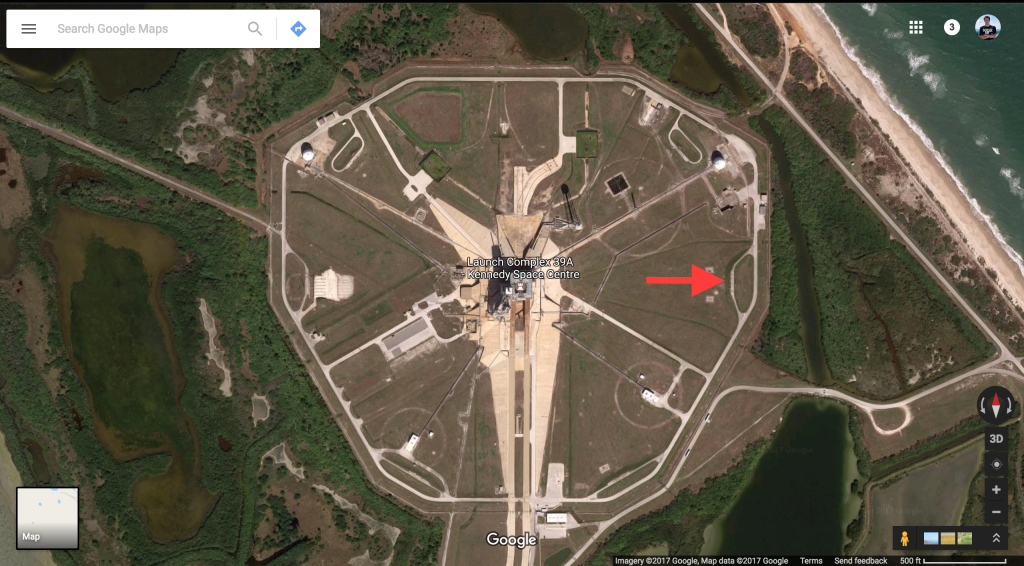
This angle is probably my favorite of the two spots we were allowed to place cameras since it is looking at it straight-on.
The rocket was horizontal at the time of setup, but we would be back later that night for a photo op with it standing vertically.
Two more remotes here, and we were set.
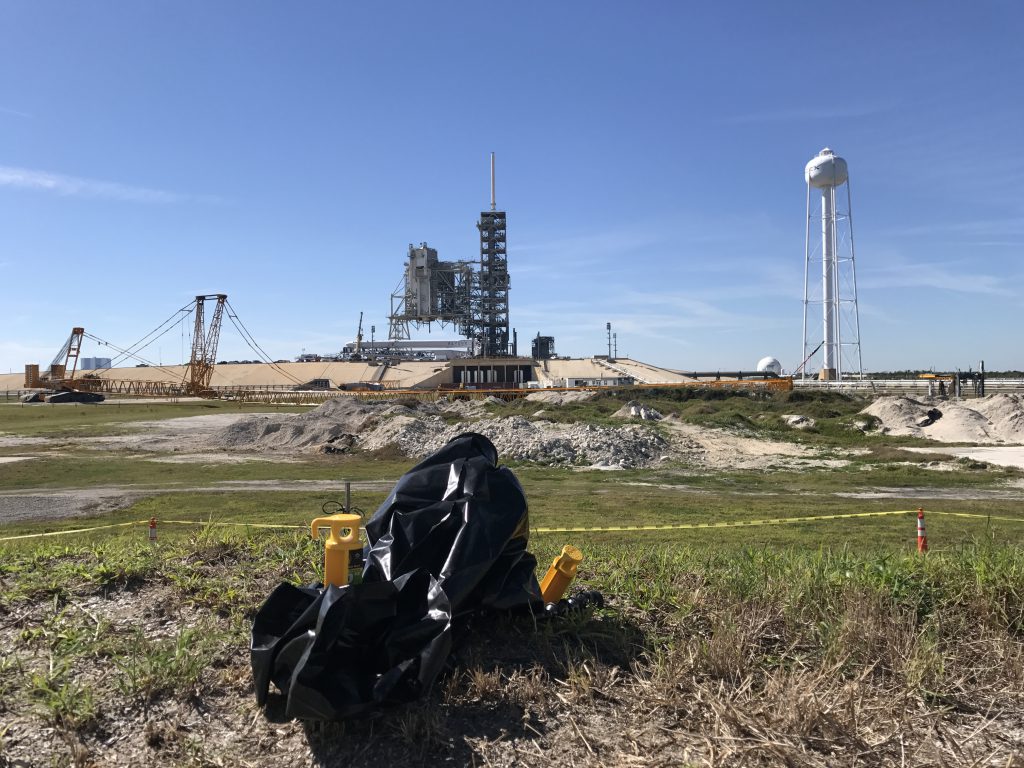
I was able to catch the famous Craig Vander Galien setting up his camera.
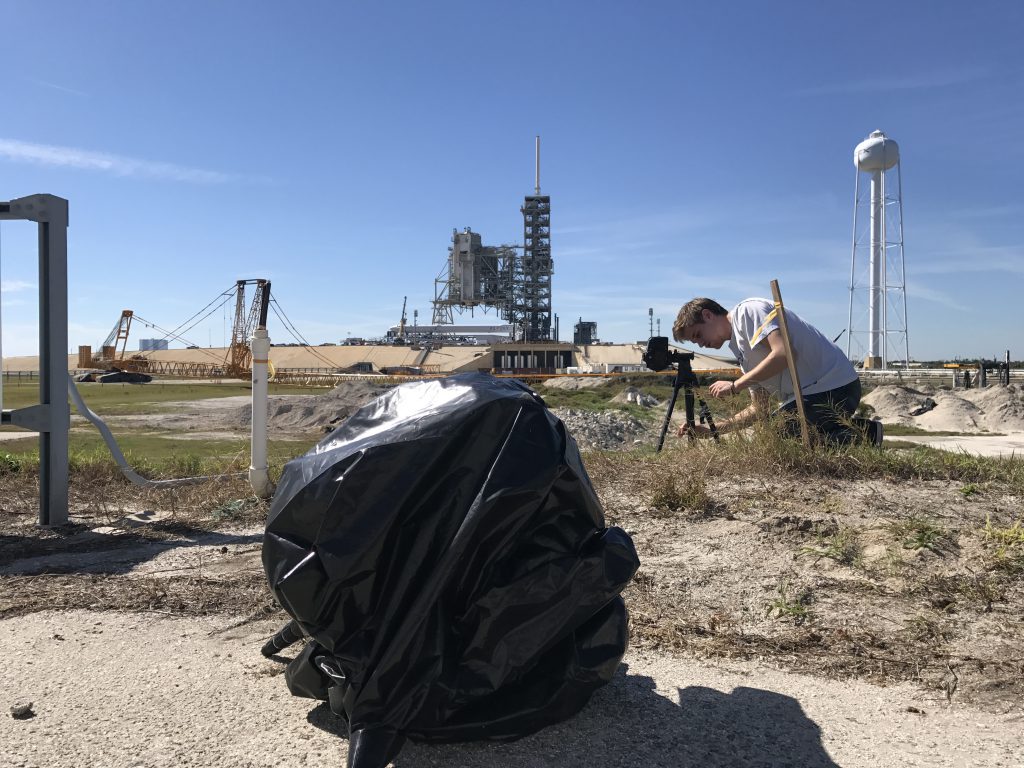
The feeling of standing on this pad and looking toward a place where Man launched to the Moon (boiler up, Neil), built a Space Station, and someday will leave to colonize Mars from is hard to put into words.
A photo I really liked. If you look closely, you’ll see the gentleman walking near the rocket, giving a little bit of perspective and showing off its true size.
After remote setup, we left to get dinner and came back for a midnight photo op with Falcon and Dragon vertical on the pad.
It was a phenomenal sight.
Old and new, F9 and its transporter erector positioned in front of the Shuttle-era FSS (fixed service structure)
The business end:
That concluded the day.
Scott and I finished up, headed back home and went to sleep – with only a few hours in between finishing photos and when we had to be back at KSC for launch
See you tomorrow for another photo story!
Leave your email below to keep up-to-date with the latest in spaceflight! (A few emails a month, max.)








